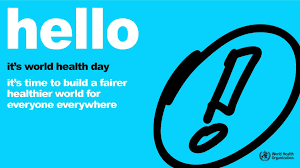Celebrating World Health Day 2021 with a Healthy Workplace

Annually, on April 7th, the World Health Organization (WHO) focuses on recognizing World Health Day. This year, WHO is advocating for building a fairer, healthier world for everyone. Advancing the universal importance of a healthy workplace, especially one that is substance free, is critical.
In a 2013 report, the International Labour Organization estimated that globally there are more than 3 billion workers (International Labour Organization, 2013). WHO stated that employees spend an average of one-third of their lives generating the products and services of their countries, however, 15.8% of occupational risks to employee health and safety are attributed to drug and alcohol use (Wolf et al., 2018; World Health Organization, n.d.). U.S. research has shown that substance use negatively impacts the workplace through increased absenteeism, lost productivity, and employee turnover, just to name a few (Wendell, 1992).
Here are a few statistics on the effects of substance use in the workplace:
- Mental, behavioral, and neurological disorders account for only 4.1% of deaths worldwide, but nearly 10% of the global disease burden. Alcohol and drug use disorders are among the main mental health disorders (Wolf et al., 2018).
- Drug and alcohol use have been linked to the occupational environment, such as coca growing, or working in the entertainment or alcohol industry (Wolf et al., 2018).
- Occupational risks, such as work stress and high demands, are thought to be a cause of depression and alcohol use (Wolf et al., 2018).
Here are selected examples of workplace interventions:
- WHO has identified the following to be among the best practices for workplace interventions (Wolf et al., 2018):
- Health and safety policies and practices for identifying, addressing, and supporting employees with stress, substance use disorders, and mental health disorders.
- Involvement of employees in decision-making.
- Practices supporting a healthy work-life balance.
- Programs for employee career development.
- Recognition of employee contributions.
- A systematic review of economic evaluations concluded that worksite interventions to prevent or treat mental health problems might be cost effective (Wolf et al., 2018).
- Many additional workplace interventions had positive outcomes for employees in the workplace, e.g. mindfulness training and other stress management or stress reduction programs (Wolf et al., 2018).
While the decision of using substances is that of the individual worker, the employer has a great opportunity to not only influence his employees, but also to support them through access to comprehensive health insurance, substance use and safety education, training, health and safety programs, and interventions. Not only will this be of great value to the individual lives of employees, but will also immensely benefit the workplace as a whole.
What programs does your employer utilize to promote a healthy work environment?